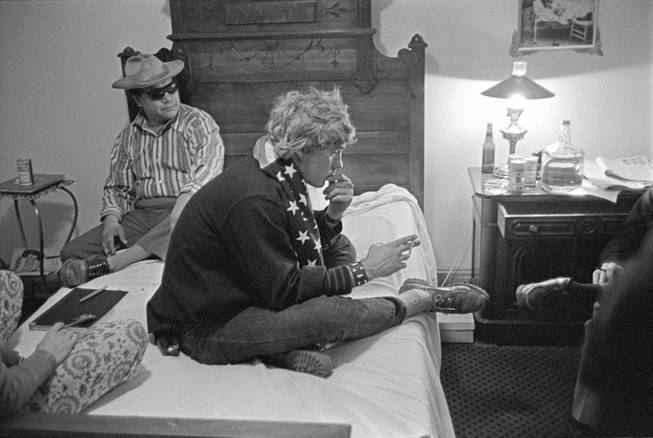ALBUQUERQUE, New Mexico — Oscar Zeta Acosta, a volatile Mexican-American writer who was the real-life inspiration for Hunter S. Thompson’s Dr. Gonzo in Fear and Loathing in Las Vegas, is the focus of a new VOCES/PBS documentary.
The Rise and Fall of the Brown Buffalo traces the life of the preacher-turned-lawyer-turned-writer who became a central figure in the Chicano Movement before disappearing without a trace in Mexico in 1974.
Using actors to recreate Acosta’s own words and interviews from friends, the PBS documentary follows the evolution of a Baptist preacher in Panama while in the U.S. Air Force to “Robin Hood” lawyer who defended poor black tenants in Oakland, California, and radical Mexican-American activists in Los Angeles.
Along the way, the El Paso, Texas-born Acosta ventured to Aspen, Colorado, where he befriended Thompson and other white counterculture figures of the late 1960s. The hell-raising pair eventually travelled to Las Vegas on a drug-fuelled trip that Thompson re-created in his 1972 novel, Fear and Loathing in Las Vegas.
The journalist would portray Acosta as a 300-pound Samoan who couldn’t get enough food, drugs and danger — a portrayal that angered Acosta because it ignored his Mexican-American identity.
Following a legal fight, Acosta gave the OK to publish Thompson’s book in exchange for publishing two of his own memoirs, The Autobiography of a Brown Buffalo and The Revolt of the Cockroach People. Both became classics in Chicano literature.
Then, he disappeared.
Director Phillip Rodriguez said Acosta’s colourful life made him a great subject. Unlike better-known Chicano activists like Cesar Chavez and Dolores Huerta, Rodriguez said everyone knew that Acosta was not a saint because of his public battles with addiction and mental illness.
“He was struggling with himself,” Rodriguez said. “But he was a man of action and challenged the whole notion [of] what it means to be a Chicano hero.”
Rodriguez said he opted to use actors to re-enact interviews and Acosta’s writing since little archive footage exists.
In the documentary, actors portraying former activists spoke of Acosta using Bob Dylan lyrics in closing arguments, detailed how he brought drugs in the courtroom and talked about Acosta keeping the remains of his stillborn daughter in a jar to cope with her death.
“He was really crazy,” Raul Ruiz, 70, the former editor of La Raza newspaper in Los Angeles who covered Acosta during his trials defending activists. “He had his flaws, but we all did. He was also a crusader, picketing with us.”
After his second marriage fell apart and sales of his books fell flat, Acosta went to Mazatlan, Mexico, and disappeared.
Santiago Vaquera-Vasquez, a writer and Spanish and Portuguese professor at the University of New Mexico, said Acosta’s books grew important after his disappearance as scholars and students sought more literature about the Mexican-American experience.
“His outrage and crazy lifestyle in the cities served as a counter to other works which were romantic and more rural,” said Vaquera-Vasquez, who uses Acosta’s work in his courses.
Vaquera-Vasquez said Acosta’s books are even more relevant today because they cover the world of activism in a racist society — something many students can recognize.
Vaquera-Vasquez said the “in-your-face” advocacy of Acosta helped give rise to Mexican-American cartoonists like Lalo Alcaraz and others.
The documentary airs Friday at 9 on KCTS.



